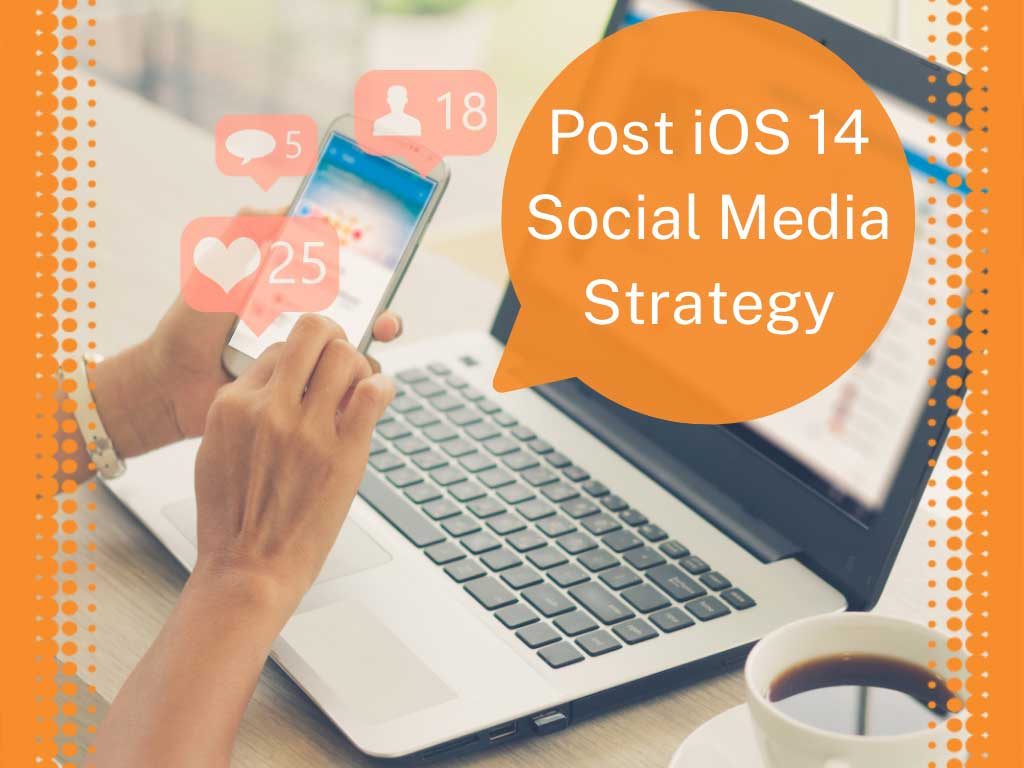App Tracking – Optimizing Your Social Media Strategy following iOS 14.5
How can we make sure our organic and paid social media strategies work together? As an agency, this is a question we get often, and with all of the recent and upcoming changes happening in the industry in terms of cookies and privacy, it is becoming an increasingly important question to ask.
In 2021, the best approach is to make sure your social media strategy is rooted in driving meaningful engagement with your audience so that you’re able to leverage engagement-based custom audiences in your paid campaigns. Let’s break that down!

Tracking Isn’t What It Used to Be
With iOS 14.5 officially released as of April 26th 2021, tracking users with the goal of setting up robust retargeting campaigns is going to look very different. Apple’s App Tracking Transparency update requires apps to show a prompt that will allow users to decide to opt-in or out of tracking. With this change, advertisers should expect a certain percentage of their current retargeting audience to opt-out of tracking. This means audience sizes will shrink and, in some cases, may now be too small to efficiently target.
This is Where 1st Party Data Comes In
When we talk about shifting our focus to gathering 1st party data, we often default to thinking about growing email lists. While this is absolutely a key component, it is also important to look at your social media channels a bit differently. The unique advantage social channels have over display/video channels is that your most valuable 1st party data comes from your community, those who engage with your content.
So How Exactly Does Social Engagement Translate Into Paid Social Campaign Success?
I recently had the opportunity to attend Social Media Examiner’s Social Media Marketing Workshops, whereI gathered some really interesting insights on social media trends in 2021.
Mari Smith had a great session on organic Facebook strategy where she shared key findings from Socialbakers’ Q4 2020 social media trends report. She revealed that Facebook Live Video was the most engaging format, with 39 median post interactions. To compare, Image posts had a median of 14 post interactions, while Video had a median of 12 post interactions. When they looked at how often each post type was leveraged though, the data revealed that Facebook Live Video was only used 0.8% of the time while Video posts accounted for 17.3% of posts and Image posts accounted for 70.3% of posts. These stats really illustrate the gap in video content on Facebook and the potential opportunity for brands who are ready to invest in video. So what should marketers do?
- Organic Social Strategy: Incorporate live video and standard video in your Facebook strategy.
- Not only will you break through the clutter of the feed but you will also be more likely to drive to stronger social engagement
- Paid Social Opportunity: Create a custom audience of users who’ve watched a certain percentage of your organic videos in Facebook Ads Manager.
- Leverage this audience as a MOF (middle-of-funnel) audience in your paid campaigns.
- Remember that these people have previously shown interest in your brand by watching your videos, so ensure the creative they are served reflects this and pushes them down the funnel to conversion.
Another valuable workshop I attended was Vanessa Lau’s session on writing Instagram captions that convert. Her formula for writing high-converting captions starts by leading with a Hook and ending with a two-part CTA (call-to-action).
The Hook should be written in a way that not only captures your audience’s attention but it should also stand alone as a truncated (125 character) sentence. There are a few ways you can do this:
- A question – “Not sure how iOS 14.5 will affect your paid social campaigns?”
- A counterintuitive statement – “Facebook retargeting as you know it will no longer exist.”
- An attention grabbing title – “How To Optimize Your Social Media Strategy for iOS 14.5”
The CTA should be broken down into two parts to not only strategically drive social engagement but also guide your audience down the path to purchase or conversion.
- Primary CTA to boost short term engagement – “comment below…”, “Drop X emoji if…”
- Secondary CTA to create long term lead gen/conversion – “want to learn more about…click the link in our bio to…”
What should social media marketers take away?
- Organic Social Strategy: Invest just as much time crafting your caption as you do on your image/video. The caption shouldn’t be an afterthought.
- First, determine the objective of your post then ask yourself how you want your audience to engage with your post.
- Paid Social Opportunity: Create a custom audience of people who’ve engaged with your social account.
- This audience will include those who have visited your profile or have taken an action on an organic post or ad, such as reactions, comments, shares, carousel swipes, button taps, or shares.
- Leverage this audience as a MOF (middle-of-funnel) audience in your paid campaigns.
Final Thoughts
With the digital media landscape rapidly evolving, I know it can feel overwhelming to stay on top of all the changes. If you’re worried about shrinking retargeting pools just remember that the world of social media offers many different opportunities to re-engage your audience that doesn’t involve landing them on your website first. And if you need help crafting a social media strategy, organic or paid, let’s talk!